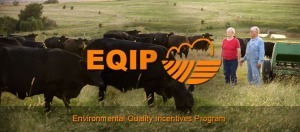USDA and Local Partners Offer Opportunities to Reduce Wildfire Risk
The goal of the Capital 360 partnership is to improve forest health by integrating resource management across all administrative boundaries. Fuels reduction treatment projects will be strategically placed across Broadwater, Jefferson, Lewis and Clark, and Powell counties.
USDA’s Natural Resources Conservation Service (NRCS) and Forest Service are working together to fund the Capital 360 partnership across private and public lands. NRCS projects will use Environmental Quality Incentives Program (EQIP) funds.
While EQIP applications are accepted year-round, applications for the Capital 360 initiative must be received by May 18, 2018, to be considered for this funding period.
Contact your local USDA field office for more information and to apply.
- Broadwater – Justin Meissner, 406-266-3146 x 103
- Jefferson County – Nancy Sweeney, 406-287-3215 x 301
- Lewis and Clark County – John George, 406-449-5000 x 101
- Powell County – Glen Green, 406-415-4040
“The Capital 360 landscape restoration efforts continue to build on the successful implementation of smaller-scale fuels reduction projects by many partners in the project area,” said Lori Ziehr, acting state conservationist for NRCS in Montana.
Other partners in the Capital 360 project area include the Montana Department of Natural Resources and Conservation, Tri-County FireSafe Working Group, City of Helena, and the Bureau of Land Management.
Mortality associated with the mountain pine beetle is prevalent on more than 75 percent of the project area, resulting in above average fuel loading which could result in a high-intensity/high-severity wildfire. Conifers are also colonizing native grass and shrublands in the project area. Single-species colonization leads to a reduction of habitat diversity and wildlife forage while adding to the risk of large fire growth.
“Improving forest health and resiliency in the Capital 360 project area will provide multiple benefits to the communities in the area, including a reduced risk of large-scale wildfires that have the potential to impact their homes, community infrastructure, and backyard recreation areas,” said Ziehr. “These communities will enjoy greater security when wildfires occur due to improved conditions for suppression operations.”





